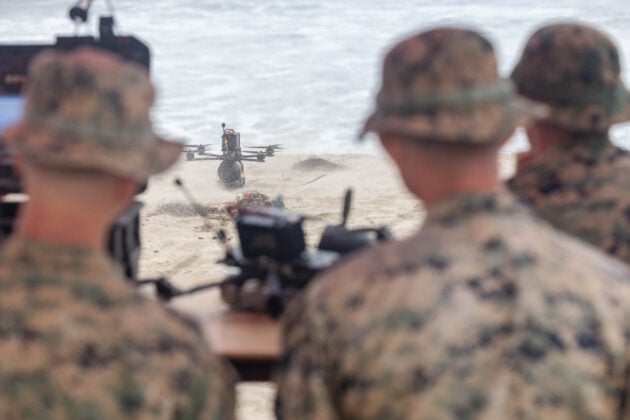
U.S. Marines with I Marine Expeditionary Force (I MEF) have completed a 12-day testing period for commercial small unmanned aircraft systems (sUAS), working in close partnership with the Defense Innovation Unit (DIU) and private industry.
The evaluations, part of Phase 2 of the DIU’s G.I. Challenge, were held from August 18 to 29 and are aimed at shaping future Department of Defense procurement decisions for drone technologies.
The exercise brought together Marines from 1st Marine Division, including front-line operators and subject matter experts, to test vendor-loaned systems in realistic, scenario-driven conditions across multiple ranges.
“The G.I. Challenge puts our Marines at the center of capability development,” said Brig. Gen. Michael Nakonieczny, I MEF deputy commanding general. “Their expertise, combined with the innovation of our industry partners, is shaping the next generation of unmanned systems.”
During the second phase of this three-part competition, Marines evaluated sUAS platforms based on key operational performance indicators such as setup time, weather resilience, payload capability, and functionality in various terrain and climate conditions. The systems were tested in simulated combat scenarios to determine how they would affect tactics, techniques, and procedures.
“Robotics are revolutionizing the battlefield, and it’s no secret that First Person View drones have become one of the most lethal and disruptive weapons worldwide,” said Maj. Steven Atkinson, the I MEF DIU event lead planner. “Our mission is to ensure America’s warfighters get the very best, battle-tested technology so they can be effective anywhere in the world.”
Vendors provided at least three prototypes of their systems for hands-on evaluation, though limited exemptions were granted for platforms with unique designs or employment concepts. Marines conducted in-depth debriefs to provide detailed feedback, which will inform both procurement decisions and the continued development of drone capabilities across the Department of Defense.
The challenge serves as a critical step in selecting platforms for inclusion on the Pentagon’s “Blue UAS List”—a cleared catalog of approved drone systems—with final selections expected by March 15, 2026.
“Bottom-up refinement is something the Marine Corps has always valued,” said 2nd Lt. Kienan Morrissey, an intelligence officer with 3rd Light Armored Reconnaissance Battalion who participated in the testing. “The ability for dedicated NCOs to test, stress and provide input on these products is exactly what was needed for this project and the service.”
According to I MEF, units will continue working with the selected platforms beyond the event, offering further recommendations for improvements. Marines focused particularly on the use of FPV drones and modern kill chain operations, in line with current battlefield realities.
The G.I. Challenge stands as one of the Marine Corps’ largest field-based drone evaluations to date. It directly supports ongoing modernization priorities outlined by senior Marine Corps and Pentagon leaders preparing for future conflict with peer-level adversaries.
“Events like these ensure our Marines will have the best available tools at their disposal in the next conflict,” Morrissey added.
I MEF remains a globally deployable Marine Air-Ground Task Force designed to respond rapidly to crises and execute major combat operations as directed by combatant commanders.